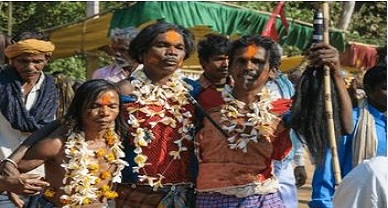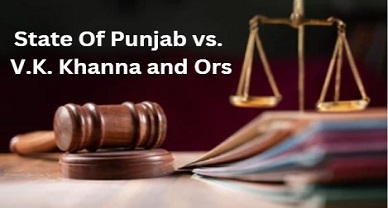Deliberating Colonial Policies to Understand the Causes behind Tribal Revolts in the Chota Nagpur Plateau – Part II
Awakened Tribals and the Objective of ‘Abua Raj’
As a result of the aforementioned economic exploitation policies of the British against tribes in India, various uprisings by the tribals took place and out of those acts of valour two of them are – Kol Uprising and Santhal Rebellion.
Kol Uprising
Around 1819, the revolt was sparked by the government’s appointment of a Political Agent in South Bihar and recently surrendered territories nearby. As a result, a large number of people moved into these territories, which were home to several adivasi tribes. There were no rulers among these tribes, and their territory were partitioned into families by “parhas,” or conferences. The Kols were exploited by strangers arriving into the region and taking up agriculture and commercial pursuits that were unfamiliar to tribe culture as a result of new land regulations. Many of the residents’ lands were taken away as collateral for unpaid creditors. In a number of situations, natives whose languages were unknown to the immigrants were exploited and punished. Another irritant was the imposition of taxes on formerly free-moving items such as salt. Official corruption and lawlessness ensued. In retaliation, the masses of common people, the Kols being the most numerous, set fire to the freshly arrived people’s homes.[i]
The Kol tribesmen of Chhota Nagpur under the leadership of Buddhu Bhagat, Joa Bhagat, and Madara Mahato rose up in revolt against the East India Company in 1831, enraged by exploitation by EIC agents. Buddhu Bhagat, Joa Bhagat, Madara Mahato, and others were among the rebel Kols’ leaders. The Kols became enraged as non-tribals like as Hindus, Muslims, and Sikhs began to infringe on tribal lands. Forced labour, penalties, and livestock confiscation were common tactics used by the new non-tribal landlords. The Kol insurgency began in 1831, when two Sikh thekedar (contractors) had their land looted and burned. There were skirmishes between the military troops and the tribal Kols rebels in 1832.[ii]
Santhal Rebellion
Two Santal rebel leaders, Sidhu and Kanhu Murmu, assembled 60,000 Santhals and declared war on the East India Company on June 30, 1855. During the revolt, Sidhu Murmu gathered roughly ten thousand Santhals to form a rival government. The main goal was to collect taxes by enacting and implementing his own legislation.[iii]
The Santhals went to war soon after the announcement. Zamindars, money lenders, and their operatives were killed in various areas. The Company’s administration was taken off guard by the open insurrection. A small group was deployed to repress the rebels at first, but they were ineffective, which inflamed the rebellion even more. When the law and order situation became untenable, the Company management took a big step and dispatched a strong contingent of troops, backed by the local Zamindars and the Nawab of Murshidabad, to put down the rebellion. The East India Company offered a reward of Rs 10,000 if Sidhu and his brother Kanhu Murmu could be apprehended.[iv]
Following that, a series of clashes erupted, with the Santhal troops suffering a considerable number of fatalities. The Santhals’ rudimentary weaponry were ineffective against the East India Company military’s gunpowder weapons. The 7th Native Infantry Regiment, the 40th Native Infantry Regiment, and additional troop detachments were called into battle. From July 1855 to January 1856, major battles took place at Kahalgaon, Suri, Raghunathpur, and Munkatora.
After Sidhu and Kanhu were killed in action, the rebellion was put down. During the revolt, war elephants sent by the Nawab of Murshidabad were used to demolish Santhal homes. Over 15,000 of the 60,000 tribesmen who were recruited during the insurrection (many of them were milkmen and blacksmiths) were slain, and tens of villages were razed.[v]
Munda Rebellion vis-à-vis ‘Abua Raj’
‘Abua Dishom Re Abua Raj’ can be considered similar to the Swaraj coined by one of the prominent leaders of the Indian History Honourable Bal Gangadhar Tilak.[vi] The same was coined by Bhagwan Birsa Munda in Munda Rebellion that took place in the year 1899-1900. This ‘Ulgulan’ by the Mundas was an attempt to ascertain Munda Raj by overthrowing the British administration.[vii]
The movement took on a violent form. On Christmas Eve, 24 December 1899, everything went off as planned. The movement was monitored against business owners, contractors, police officers, and state officials. Outsiders were ambushed with conventional weapons, and their homes were burnt. The movement’s circumstances mirrored its hate for Christians, namely British government missionaries.[viii]
On January 5, 1900, they assassinated constables and assaulted chowkidars. On January 6, 1900, they had a feud with the Deputy Commissioner. On January 7, 1900, they assassinated a policeman. The government quickly went on the offensive. From January 13 to January 26, 1900, it was in beat and search mode.[ix]
Thus, this way all these rebellions took place.
Effects of the Revolts on the Indian Struggle for Freedom
The effect of these revolts had a far-reaching impact on the socio-political structure of India during that time. No other community in India mounted as valiant opposition to British authority or suffered such tragic repercussions than India’s diverse tribal and peasant communities during the early years of the British Raj. Simple, industrious, and peace-loving people who lived mostly off their agricultural land or woods, these communities fought back vehemently against colonial rule’s land grabs and economic exploitation. Though these uprisings were frequently unsuccessful in uprooting the British, they laid the groundwork for the eventual war for independence.[x]
Conclusion
The paper discussed Kol Uprising, Santal Rebellion and Munda Rebellion and endeavoured to relate them with the aforementioned mentioned research objectives. It can be deduced from the research that the British economic exploitative policies against the Tribals backed by the agricultural land exploiting schemes resulted in most of the unrests against them.
Further, the tribal leaders that lead these revolts are the primary ‘motivating factor’ as they were the one who supported and increased political consciousness among the tribals resulting in these rebellions demanding for the reinstatement of their rights. Though various revolts were considered a failure as they failed to stand in front of the might of the East India Company or British Administration, they gave a spark to the political consciousness of Tribals as well as Indians, thereby helping directly or indirectly in National Freedom Struggle. It can be corroborated from the fact that the political awakening of tribals was one of the chief reasons that led to the success of these revolts and rebellions to a certain extent. An example of the same can be the war cry of Munda Rebellion – Abua Dishom, Abua Raj.
Author: Kaustubh Kumar, in case of any queries please contact/write back to us via email to chhavi@khuranaandkhurana.com or at Khurana & Khurana, Advocates and IP Attorney.
References (as per ILI Format)
- Romila Thapar and Majid Hayat Siddiqi, “Chota Nagpur: The Pre-Colonial and Colonial Situation”, in Trends in ethnic group relations in Asia and Oceania 34 (UNESCO, 1979).
- Stacy L. Leeds, “By Eminent Domain or Some Other Name: A Tribal Perspective on Taking Land”, 41 Tulsa Law Review 51 (2013).
- “Unit 15 Anti-Colonial Tribal Movements In India” available at <https://egyankosh.ac.in/bitstream/123456789/20640/1/Unit-15.pdf> (last visited on May 15, 2022).
- Sanchari Pal, “14 Forgotten Folk Uprisings That Prepared the Ground for Indian Independence,” The Better India, available at <https://www.thebetterindia.com/64756/folk-movements-indian-independence/> (last visited on May 15, 2022)
- Bipan Chndra, Mridual Mukherjee, et.al., India’s Struggle for Independence: 1857-1947 (Penguin Random House India, New Delhi, 2016).
- Elizabeth Rottger-Hogan, “Insurrection… or ostracism: A study of the Santal rebellion of 1855”, 16 Contributions to Indian Sociology 82 (1982).
REFERENCES
[i] KS Singh, “The ‘Tribals’ and the 1857 Uprising” 26 Social Scientist 79 (1998).
[ii] Shashank Sinha, “Witch-Hunts, Adivasis, and the Uprising in Chhotanagpur” 42 Economic and Political Weekly 1673 (2007).
[iii] Abha Xalca, “The Great Santal Insurrection (Hul) Of 1855-56” 69 Proceedings of the Indian History Congress 734 (2008).
[iv] Ata Mallick, “The Resurgence Of A Marginalized Society: 1857 Rebellion And The Santal Psychology” 76 Proceedings of the Indian History Congress 448 (2015).
[v] Atis Dasgupta, “Aspects of the Santal Rebellion of 1855—56” 41 Social Scientist 71 (2013).
[vi] “Bal Gangadhar Tilak: He held high the torch of Swaraj,” Hindustan Times, July 23, 2019, available at <https://www.hindustantimes.com/ht-school/bal-gangadhar-tilak-he-held-high-the-torch-of-swaraj/story-Aob7Nusy4kk7mMBX59pQOK.html> (last visited on May 15, 2022)
[vii] BB Mohanty, “Land Distribution among Scheduled Castes and Tribes” 36 Economic and Political Weekly 3859 (2001).
[viii] Ramchandra Guha, “Adivasis, Naxalites and Indian Democracy” 42 Economic and Political Weekly 3308 (2007).
[ix] KS Singh, “The Munda Epic: An Interpretation” 19 India International Centre Quarterly 87 (1992).
[x] Sanchari Pal, “14 Forgotten Folk Uprisings That Prepared the Ground for Indian Independence,” The Better India, available at <https://www.thebetterindia.com/64756/folk-movements-indian-independence/> (last visited on May 15, 2022)


